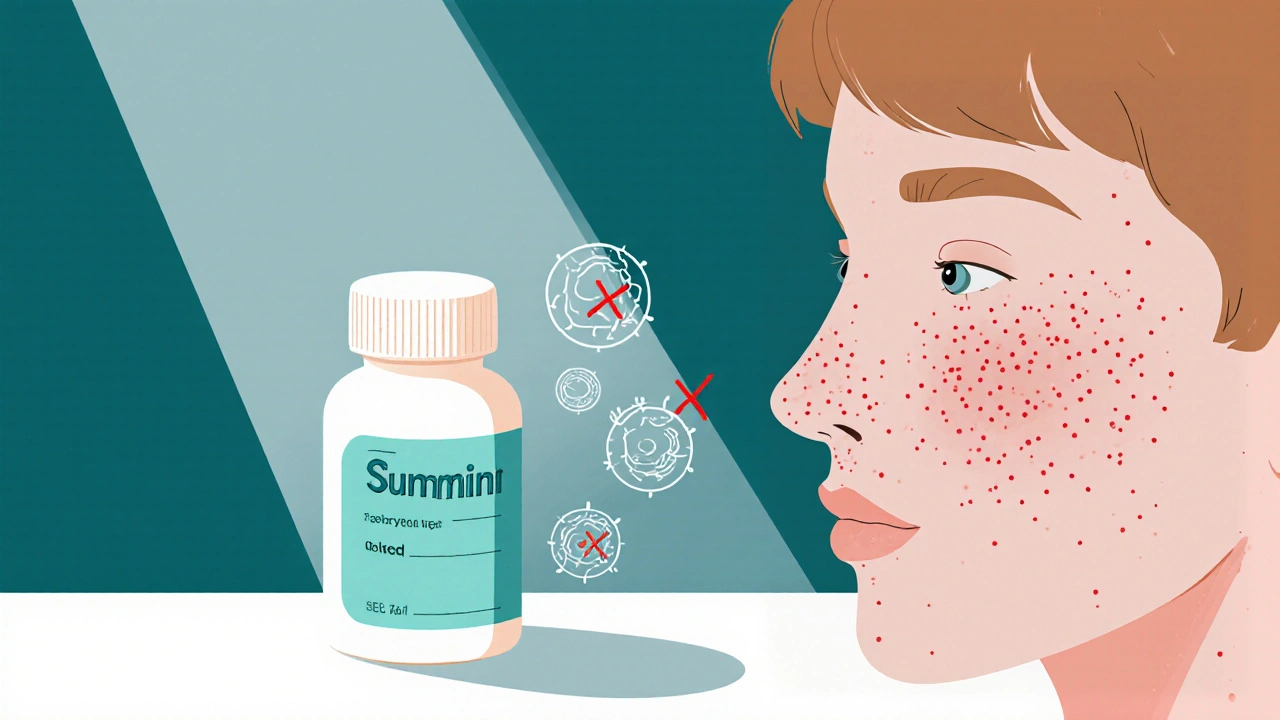Tetracycline: Uses, Side Effects, and What You Need to Know
When you hear tetracycline, a broad-spectrum antibiotic first introduced in the 1940s that treats bacterial infections from acne to Lyme disease. Also known as a tetracycline antibiotic, it was once the go-to for many common infections—but today, its use is more limited due to resistance and newer options. Tetracycline works by stopping bacteria from making proteins they need to survive. It’s not a cure-all, and it’s not always the best choice anymore, but it still has a place in treatment plans—especially when other drugs aren’t an option.
One of the biggest reasons tetracycline isn’t used as much today is because of doxycycline, a more modern, better-tolerated cousin in the same antibiotic family. Also known as a tetracycline derivative, doxycycline has fewer side effects, works longer in the body, and doesn’t need to be taken as often. Many doctors now start with doxycycline instead of tetracycline, especially for skin infections, tick-borne illnesses, and respiratory issues. But tetracycline still pops up in prescriptions for acne, particularly in younger patients or when cost is a concern.
Using tetracycline comes with risks you can’t ignore. It can stain developing teeth in kids under 8, so it’s off-limits for young children and pregnant women. It also messes with your gut, causing nausea, diarrhea, and sometimes serious yeast infections. And here’s the catch: it doesn’t mix well with dairy, antacids, or iron supplements—those can block its absorption. You have to take it on an empty stomach, at least an hour before or two hours after eating. That’s not easy to stick to, which is another reason why newer antibiotics are preferred.
It’s also important to know that tetracycline doesn’t work against viruses. If you’re sick with the flu or a cold, it won’t help—and taking it anyway just adds to antibiotic resistance. The overuse of antibiotics like tetracycline has made some bacteria stronger, and that’s a growing problem worldwide. That’s why doctors are more careful now. They don’t hand it out like candy. When they do prescribe it, they’re usually treating something specific: a stubborn skin infection, a case of chlamydia, or maybe even a rare infection like anthrax.
What you’ll find in the posts below isn’t just a list of articles—it’s a practical guide to how tetracycline fits into real-world treatment. You’ll see how it compares to other antibiotics like doxycycline, what patients actually experience with side effects, and how it stacks up against newer options. There are also posts on how antibiotics in general affect your body, what to avoid while taking them, and why some people need alternatives. This isn’t theory. It’s what people are dealing with every day.
A side‑by‑side comparison of Sumycin (tetracycline) with doxycycline, minocycline, azithromycin, erythromycin and clindamycin, covering efficacy, side‑effects, resistance and when each drug is best.
Oct, 26 2025

